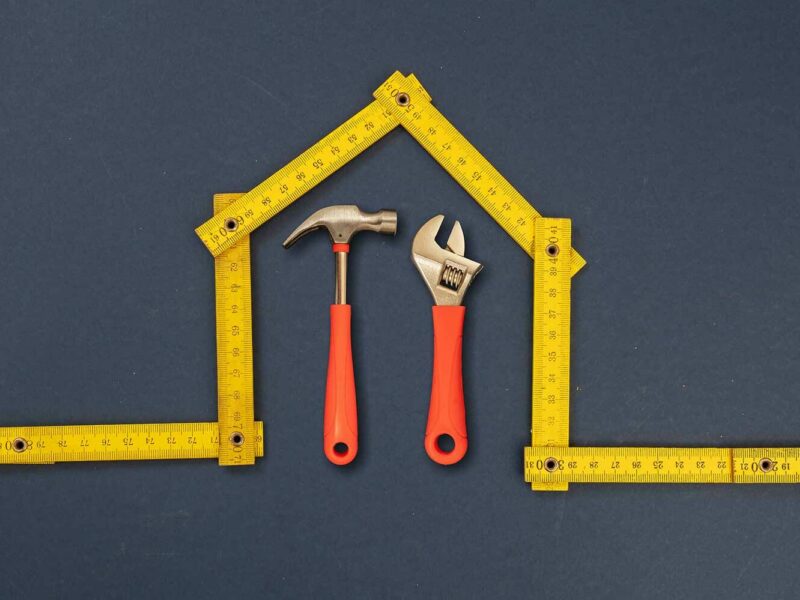Article Excerpt
The future for building materials may involve innovation toward lowering cost and promoting environmental sustainability while keeping homes affordable.
The materials used in home construction have remained mostly the same for over a century. A typical house consists mostly of wood and concrete, with additional materials used for systems like insulation, plumbing, electrical wiring, and roofing.
Pandemic supply shortages led some homebuilders to look for alternative materials they could use in place of lumber. Many possible alternative building materials are available or could be available soon for use in new home construction. Here are a few examples.
» READ MORE: Why it’s so Expensive to Build Homes in the COVID Era
What’s Wrong With Our Current Building Materials?
Lumber and concrete are reliable materials for building a house. A well-constructed home with wood framing on a concrete slab foundation can last for decades if its owners take good care of it. Several factors could make it worthwhile, however, to consider alternatives.
First, there’s the issue of supply chains and consumer demand. Lumber got so expensive because not enough was available to satisfy all of the people who wanted it. While lumber is a renewable resource, it takes time for trees to grow, and it takes a great deal of effort to transport lumber to all of the places where it’s in demand.
The other concern is environmental. The world has many, many forests, but they are not infinite. Cutting down wild forests is not our only source of lumber, but it is a source. It could be worthwhile to innovate with sustainable building materials.
Concrete also poses sustainability issues. The production of cement, which is a component of concrete, accounts for at least 8% of all carbon emissions worldwide. The process involves mixing limestone with clay and heating it to over 2,500 degrees Fahrenheit. This process releases Every ton of cement produced using this process releases about 1,300 pounds of carbon dioxide.
![Photo by billbeee from Wikipedia [Creative Commons] Concrete slab with rebar placed for a new home construction.](/images/articles/_generalPhotoStandard/Raft-slab.jpg)
Photo by billbeee from Wikipedia [Creative Commons]
What Are Some Possible Future Building Materials?
Builders have begun exploring possible alternatives to traditional building materials. Some of the following materials could be viable for home construction in the near future, while others are still largely experimental. The main purpose of some is to replace current materials, while others have gained attention for their sustainability.
Structural Insulated Panels
Structural insulated panels (SIPs) can be used in walls and other parts of the home to reduce the amount of lumber needed. A SIP consists of three layers. The middle layer is a rigid insulating material made from a material like polystyrene or polyurethane. The two outer layers can be made from a variety of materials, including plywood, sheet metal, or particle board.
![Photo by D.fitswell from Wikimedia Commons [Creative Commons] Insulation foam between two squares of plywood.](/images/articles/_generalPhotoStandard/insulated.jpg)
Photo by D.fitswell from Wikimedia Commons [Creative Commons]
Cross-Laminated Timber
Cross-laminated timber (CLT) creates building parts with the same strength as hardwood, if not greater, out of small pieces of softwood. The process involves laminating the softwood pieces and gluing them together under high pressure to create large wood blocks. It allows for the use of wood that would not otherwise be suitable for construction. CLT panels can be used in most parts of home construction that involve lumber.
![Photo by Райн Александр Дмитриевич from Wikimedia Commons [Creative Commons] A stack of three pieces of wood that shows the grain of the wood.](/images/articles/_generalPhotoStandard/wood_2022-12-19-204427_nqyr.jpg)
Photo by Райн Александр Дмитриевич from Wikimedia Commons [Creative Commons]
Bio-plastics
Various types of plastic are used in home construction. The bio-plastic industry is attempting to replace petroleum-based plastics with materials that will not be as harmful to the environment. Opinions vary as to how successful it is likely to be.
Currently, bio-plastics appear in many types of packaging, such as packing peanuts made from starch instead of styrofoam. One company in the UK is specifically targeting potato waste for use in creating a bio-plastic material to replace chipboard. It might be possible to adapt bio-plastic for use in home construction.
![Photo by Christian Gahle, nova-Institut GmbH from Wikimedia Commons [Creative Commons] Bio-plastic pieces shaped like packaging foam.](/images/articles/_generalPhotoStandard/bioplastic.jpg)
Photo by Christian Gahle, nova-Institut GmbH from Wikimedia Commons [Creative Commons]
Zero-Carbon Cement
As mentioned above, cement production is a big contributor to carbon dioxide emissions. Several companies have developed products that reportedly offer the same benefits as concrete with almost none of the carbon dioxide. This futuristic building material process may become a standard practice one day.
![Photo by Denslenovo from Wikimedia Commons [Creative Commons] Powder form of concrete.](/images/articles/_generalPhotoStandard/concrete_2022-12-19-204754_mdvb.jpg)
Photo by Denslenovo from Wikimedia Commons [Creative Commons]
Mushroom Insulation
The most common material used in home insulation today is fiberglass. While other options are available, none of them are particularly sustainable. Mushroom insulation uses the root structure of mushrooms, known as mycelium, to form insulation panels. The resulting product is reportedly just as effective as standard insulation while also being completely biodegradable. This is one of the most cutting-edge innovations in building material science to date.
Ready to Purchase a Cutting-Edge Home?
As builders adapt to new demands in the construction industry, your mortgage lender should too. The Wood Group of Fairway utilizes the perfect mix of technology and human help to ensure your mortgage reaches the closing table in the smoothest way possible. If you’re interested in purchasing a home built with innovative new materials, let’s first make sure it’ll pass inspection under the loan program best fit for you.
Get started on your free (and fast!) pre-approval now by answering a few easy questions!



